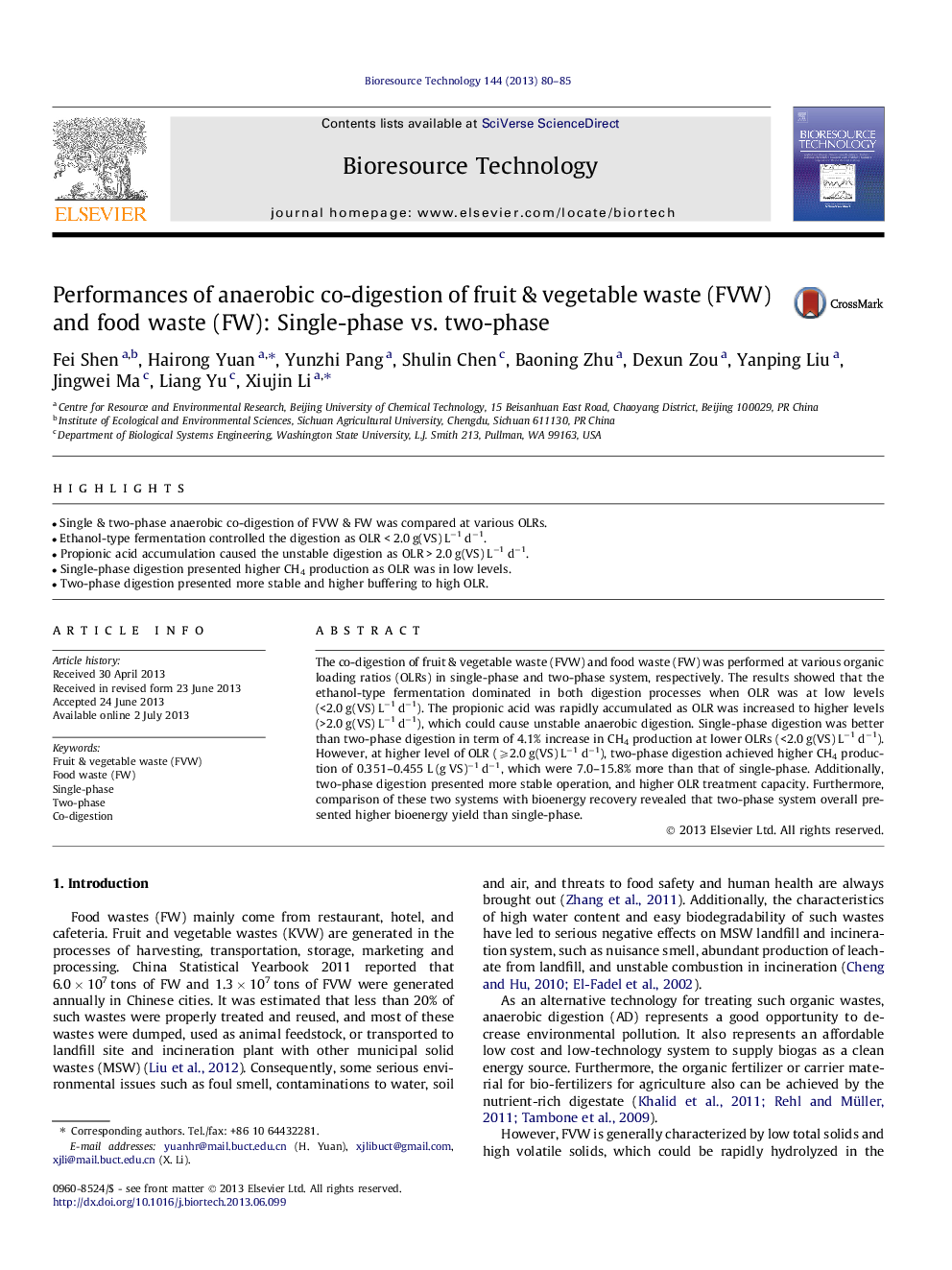| Article ID | Journal | Published Year | Pages | File Type |
|---|---|---|---|---|
| 7080960 | Bioresource Technology | 2013 | 6 Pages |
Abstract
The co-digestion of fruit & vegetable waste (FVW) and food waste (FW) was performed at various organic loading ratios (OLRs) in single-phase and two-phase system, respectively. The results showed that the ethanol-type fermentation dominated in both digestion processes when OLR was at low levels (<2.0 g(VS) Lâ1 dâ1). The propionic acid was rapidly accumulated as OLR was increased to higher levels (>2.0 g(VS) Lâ1 dâ1), which could cause unstable anaerobic digestion. Single-phase digestion was better than two-phase digestion in term of 4.1% increase in CH4 production at lower OLRs (<2.0 g(VS) Lâ1 dâ1). However, at higher level of OLR (⩾2.0 g(VS) Lâ1 dâ1), two-phase digestion achieved higher CH4 production of 0.351-0.455 L (g VS)â1 dâ1, which were 7.0-15.8% more than that of single-phase. Additionally, two-phase digestion presented more stable operation, and higher OLR treatment capacity. Furthermore, comparison of these two systems with bioenergy recovery revealed that two-phase system overall presented higher bioenergy yield than single-phase.
Related Topics
Physical Sciences and Engineering
Chemical Engineering
Process Chemistry and Technology
Authors
Fei Shen, Hairong Yuan, Yunzhi Pang, Shulin Chen, Baoning Zhu, Dexun Zou, Yanping Liu, Jingwei Ma, Liang Yu, Xiujin Li,
